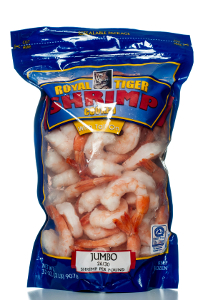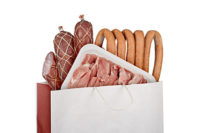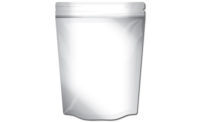When hasn’t the cost of packaging materials been a primary concern to protein processors? Always has, always will be.

|
The toughest financial times in memory have done nothing but cast a harsh spotlight on all business costs. Circumstances like these cause people to discard attitudes and beliefs long held and re-evaluate their businesses looking to save money where they reasonably can just to survive.
Desperation favors no sacred cows. Pre-made packaging formats such as vacuum shrink bags, trays and pouches, naturally, are going to be scrutinized and weighed, where possible, against a lower cost packaging option such as form-fill-seal, particularly thermoform packaging.
Obviously, form-fill-seal is not a recent discovery, and the economic climate of the past three or four years does not represent the first time processors have considered alternatives that affect costs and, yet, still perform to the requirements of the application. It’s just that business models have changed or been altered significantly in so many instances that form-fill-seal packaging’s attributes may be viewed now as acceptable cost benefits. And let’s face it; it’s not like a compromise or settling. It’s just different.
Take versatility. A form-fill-seal system can create packages of multiple sizes, shapes and configurations with just tooling changes. Programs moving toward smaller portion sizes make even more sense for form-fill-seal and may benefit from better cost efficiencies.
The lower material cost of roll stock compared with pre-made formats may be amplified even more when storage space is considered. Each variation of bags or trays requires space and adds to inventory costs, whereas roll stock’s versatility enables many package sizes to come from the same roll width. All of this helps to control costs that, in turn, don’t have to be pushed out to customers.
With some applications, thermoformed packages have not been viewed as real options to pre-made trays because they do not deliver enough rigidity. Consumers interpret this “flimsiness” as an indication of poor quality and cheap product, which may be an entirely incorrect assumption.
Today, there are materials that thermoform quickly, not sacrificing significant processing speeds, and deliver enough rigidity to be viable options to trays. Some of these are even made from renewably sourced materials with 60 percent to 80 percent of the structures bio-based. These same materials carry manufacturer’s claims of possessing very high gas barrier properties that can extend the shelf life of fresh meats by 15 percent to 40 percent, based on the application. And all of this performance comes at a cost comparable to conventional plastics, according to industry sources.
Managing packaging costs without compromising functional performance is at best a shaky tightrope walk without the benefit of a net. Anymore it’s risky to be blindly wedded to any format or system, especially if you dispassionately evaluate what you need from a package and find there’s more than one way to get it, and one of those ways may cost you less.
Sacred cows beware.








Report Abusive Comment